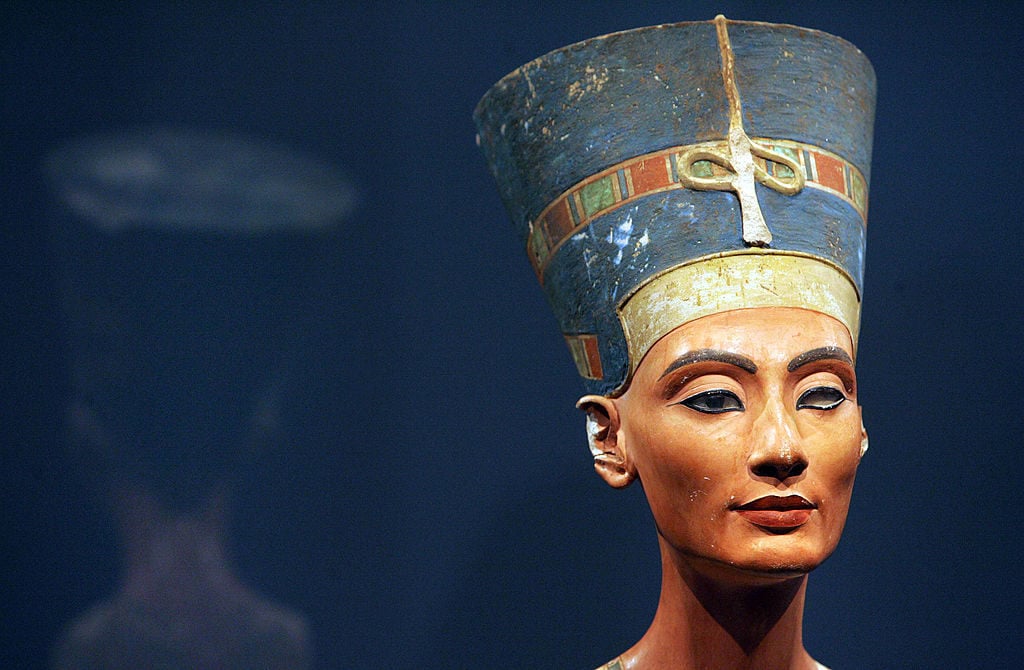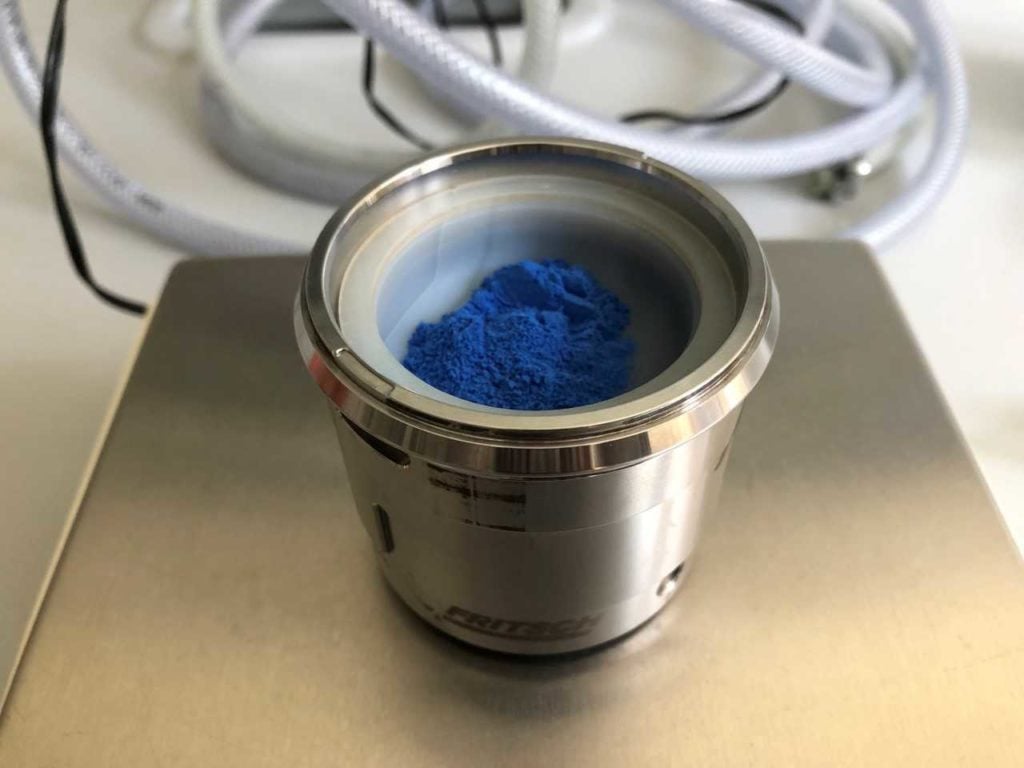Art World
Scientists Have Turned a Pigment Invented by the Ancient Egyptians into a Vital New Tool for Biomedical Researchers
Egyptian blue is one of the oldest pigments made by man. Now it is at the cutting edge of microscopic imaging.

Egyptian blue is one of the oldest pigments made by man. Now it is at the cutting edge of microscopic imaging.

Naomi Rea

A team of scientists in Germany has found a new, biomedical, use for a pigment invented by the Ancient Egyptians by turning it into nano-sized particles.
Egyptian Blue is one of the oldest manmade pigments. More than 4,000 years ago the Ancient Egyptians used it on tombs and on statues, including the crown of the famous limestone bust of Nefertiti, which is today in Berlin’s Neues Museum.
A researcher at the University of Göttingen, Sebastian Kruss, has used the pigment, which is also known as calcium copper silicate, to produce a new nanomaterial that improves infrared spectroscopic and microscopic imaging.
It turns out that the pigment is a good “fluorophore,” a light-emitting material that is used to stain tiny samples so that they can be seen at clearer resolution using modern microscopes. The imaging is a vital tool in biomedical research.

Egyptian blue: the researchers obtained the nanosheets from this powder. Photo: University of Göttingen.
Speaking to Artnet News, Kruss explains that he got the idea after a student labeled a sample with a pen, and the ink containing the pigment showed up on a specialized microscope. Kruss says it was “surprising” because very few materials show fluorescence at the near-infrared level, which is a light that humans cannot see. “We then started to make [the Egyptian Blue] pigment smaller and smaller to get tiny sheets that are useful for biomedical imaging.”
Kruss and his team were able to strip back the pigment to reduce its size by a factor of up to one million, and found that even then it works as a good fluorophore, remaining “extremely bright” and not bleaching as many standard dyes do at that level. These nanosheets are 100,000 times thinner than a human hair. “These tiny [Egyptian Blue] particles are then very useful glowing labels in biomedical research.”
Kruss suggests that this new “very powerful fluorophore” could be used “to understand how an embryo develops or cells divide,” in “image guided surgery, or labelling of cancer tissue.”
“I am sure it will be of growing interest for material scientists as well as biomedical research,” Kruss says.